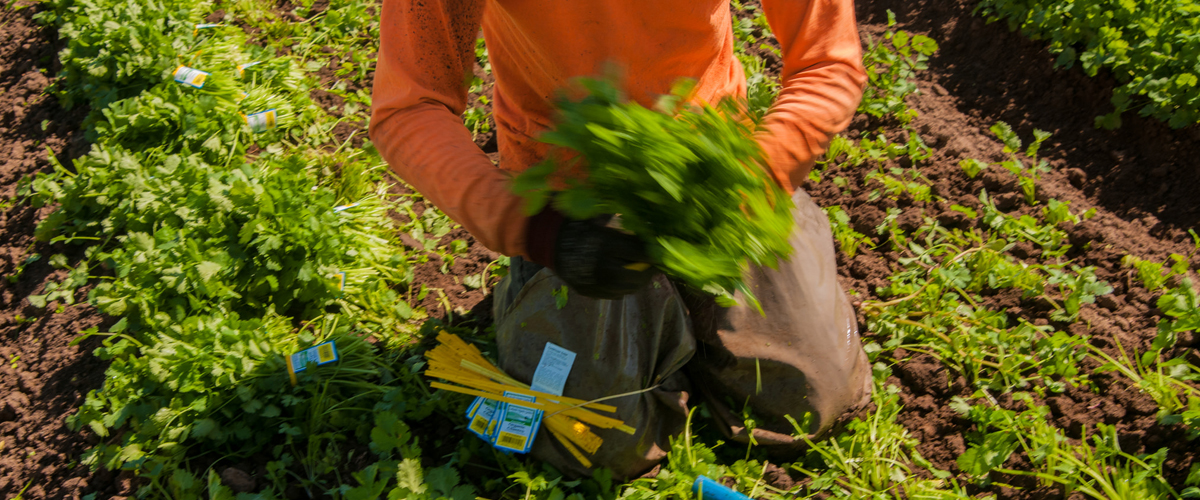Food Safety and Sustainability: Flip Sides of the Same Coin

This is an exciting time in the specialty crops sector, filled with innovation and entrepreneurship at every level of operation, bringing consumers unprecedented levels of safety, quality, and convenience. Today’s discerning shoppers increasingly expect fruits and vegetables not only to meet the highest safety standards, but also to be responsibly produced with respect to the environment, labor rights, and a range of other sustainability issues. However, there has been a disconnect in the way we address food safety and sustainability. Specifically, they tend to be viewed as entirely different issues, when in fact, I would propose that we begin thinking of food safety and sustainability as flip sides of the same coin. Rather than approaching these issues separately, it’s time to start addressing them in tandem. Here I explore why.
Challenges and Opportunities
From the producer’s viewpoint, managing food safety risks is an economic imperative. One false step can cost a company its reputation. At the same time, the long-term sustainability and resilience of agricultural production have become necessities, as companies grapple with water availability in drought-prone regions, labor shortages [see my blog, “U.S. Farm Labor Shortages Effects on Agricultural Working Conditions and the Role of Third Party Certification,” Sept. 2016), and other challenges.

In today’s market, agricultural production operations are expected to implement stringent food safety practices. Companies hire in-house experts to maintain effective food safety programs, demonstrate compliance with standards through third-party audits and certification, develop and implement Standard Operating Procedures, file documentation, and keep up-to-date on regulations. Simultaneously, sustainability recognition is seen as a new market advantage. Producers, food companies, and grocery retailers are evaluating their growing practices and supply chains to determine ways to enhance environmental protection and working conditions, and leverage these efforts for competitive benefit. Companies are also relying on audit and certification programs to communicate their proactive measures in sustainability. Ideally, these efforts would occur under a unified framework, but more often than not, they don’t.
Overlapping and Complementary Aspects
In many ways, sustainability and food safety objectives overlap. For instance, they both deal with risk management, science-based approaches, compliance with minimum standards, supply chain integration, and traceability. Additionally, they are both most effective when workforce and management training and educational programs are implemented.
Sustainability and food safety can also be viewed as complementary. For instance, food safety is essential for the economic viability of the operation, a core tenet of sustainability. Moreover, comprehensive sustainability programs address risks associated with production beyond those addressed by food safety programs. For example, pesticide use is not addressed under food safety standards, yet poses potential health risks to farmworkers and the environment, and may leave residues that can pose dietary risks to consumers. Food safety is just one aspect of a holistic set of good agricultural practices that serve to mitigate vulnerabilities while reducing stress on natural resources and farmworker welfare.

The overlapping and complementary nature of food safety and sustainability best practices presents an opportunity for harmonization, not just at the production level, but also at the marketing, buyer, consumer education, and certification levels. Many of the systems used to track, promote, and manage risk for food safety can be retooled and used for sustainability purposes.
Overcoming Hurdles
The hurdles to harmonization are institutional and economic. Here in the US, food safety regulations fall under the control of the Food and Drug Administration, a branch of the Department of Health and Human Services, while sustainability guidance and funding falls under the Department of Agriculture. During the recent national discourse surrounding the new Food Safety Modernization Act (FSMA), sustainable agriculture stakeholders, such as the Washington DC-based National Sustainable Agriculture Coalition, implored policymakers to consider (and avoid undermining) sustainability goals such as conservation, biological diversity, and supporting small-scale operations. I have personally witnessed the reductionist approaches widely used to address microbial contamination risks on farms. For example, growers are often compelled to remove vegetation in and around croplands due to risk of contamination and the material economic consequences associated with an outbreak. Yet, from a sustainability perspective, the same ground cover and vegetative buffers are effective at reducing movement of sediment, nutrients, and pesticides from fields, and protecting nearby water quality. The grower is often caught in the middle of these competing values.

The University of California, Division of Agriculture and Natural Resources, uses the term “co-management” to describe a decision-making framework that recognizes that sustainability practices may impact microbiological hazards and vice versa, and looks for opportunities to optimize both. Vegetative buffers, for example, could be targeted for use near waterways instead of being eliminated completely, which could be paired with a monitoring program for animal movement.
In our own role as third-party certifiers for the produce industry, SCS has long understood the interconnectedness of these two issues, and provides bundled sustainability and food safety services to help our clients minimize costs and approach these issues holistically. To facilitate this process, we’ve recently developed new self-assessment and audit tools and cross-trained our auditors and staff.
Ultimately, we all have a vested interest in a truly integrated food system that produces safe and healthy crops, minimizes environmental and social impact, and thrives in the long run. Rather than flipping the coin to see which side of the food safety/sustainability divide we land on, it’s time to build food safety and sustainability together.
Lesley Sykes is SCS Global Services’ Manager of Sustainability in the company’s Food and Agriculture division, and a 2017 participant in the United Fresh Produce Industry Leadership Program.
For more information about SCS' combined food safety and sustainability service offerings, contact Lesley Sykes at [email protected]

